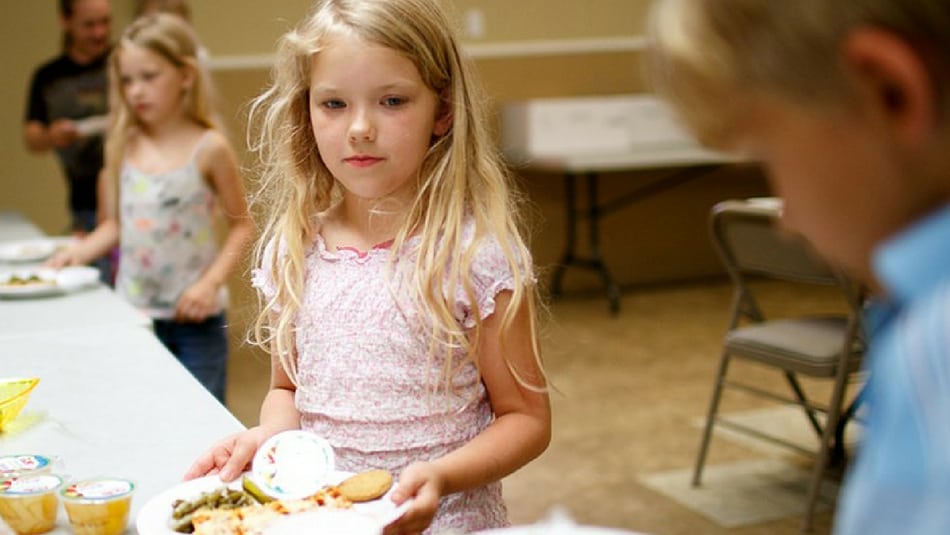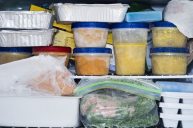I think we take school lunches a bit for granted. In elementary school I switched off between bringing a lunch (which my mother made me every day) and buying a lunch depending on what was on the menu. I would stand in line, 5 quarters jingling in my pocket, and contemplate which milk I wanted that afternoon. Most of the time it was chocolate, but who can blame me, I was only a kid.
Videos by Wide Open Country
I paid the full price with the money my dad had handed to me out of his pocket earlier than morning. However that wasn't the case for every child who bought lunch in the cafeteria with me on that day. Many fellow students received discounted or free lunch every single day and I had no idea.
Fast forward to today, and according to Time Magazine, 13 million school-aged kids in America are living in homes without the adequate resources to provide healthy food. While during the school year, parents can apply for free or reduced-price school meal programs to feed their kids, the circumstances are completely different in the summer. The programs are one (or two if the school serves breakfast) solid meals kids can count on when money is tight at home. When school is out, so is that security of having a full belly.
While summer is meant to be a time for children to play, eat popsicles and spend the day hanging with friends, children in food insecurity households face a fear of hungry when the last school bell rings. Thankfully there are national, federally-funded programs that No Kid Hungry helps support by providing awareness, grants and technical support.
What is No Kid Hungry?
A national campaign run by Share Our Strength (a nonprofit working to solve hunger and poverty in the United States), No Kid Hungry has been working diligently for American kids since 2010. For the past eight years the campaign has helped place nutritious breakfasts and afterschool meals in schools, teach parents the importance of serving healthy food to their children, serve summer meals to children and promote advocacy to promote their programs to government officials. The organization also works with experts and researchers to figure out which policies work in each community to end child hunger.
While school is in session, NKH (No Kid Hungry) helps provide the assistance to programs that serve hungry children a healthy breakfast. Since the launch of the program in 2010 2.8 million kids have been added to the school breakfast program.
However once school ends so do these programs, but NKH already has a solution-local summer meals programs.
No Kid Hungry Summer Meals
According to No Kid Hungry, only 12% of kids that qualify for free school meals are receiving free summer meals. That's 88% of qualifying kids in the United States that are not getting the nutritious food they need for 2-3 months of the year. That's a big chunk of our kids, and they deserve more.
I recently sat down with Derrick Lambert, Senior Manager of the No Kid Hungry Center for Best Practices to learn more about the program. And let me tell you, it was eye-opening to learn about this program that works right under our noses. Funded by the United States Department of Agriculture (USDA), Derrick shared that last year there were over 50,000 meal sites across the United States. They anticipate that number to be the same, if not more, this summer.
"On average, low-income families spend $316 more on groceries each month during the summer," Derrick shares, "which too often means making difficult decisions between buying food and paying for utilities or medical care." And that's where this program shines. Parents are faced with a difficult choice they should never have to face. The choice between paying bills or feeding kids healthy meals.
Beatriz R., a mother of two from Colorado, told staff from the No Kid Hungry campaign, "In the summer, we have to buy more food because she spends more time at home," Beatriz R. explains. "It's hard because sometimes I don't have work either, and then there's only one income. There is bills, there's gas, and so it's hectic sometimes. Sometimes we fall behind." Thankfully the No Kid Hungry campaign is there to help.
"The summer food program added little extra income to our home because it means that we don't have to spend as much on groceries, we are able to have extra more for either utilities or clothes or gas. It's a big help." Beatriz says.
Offering meals to children 18 and younger, summer lunches are served at places families already know like their church, library, school and even camp. Parents can find their nearest summer meal with their cell phone. The "text to find summer meals" number helps families find food. When people text 'FOOD' or 'COMIDA' to 877-877, along with their zip code, the service texts them the addresses of the nearest summer meals sites.
The food is well-balanced and down-right delicious. All menus must meet the USDA standards for healthy eating. Some sample menus include sweet and sour chicken served with brown rice and vegetables and BBQ pork sandwiches served with steamed zucchini. There's always a balance of protein, whole grains, fruits, vegetables and dairy.
How To Help
The best way to help with the cause is spreading the word. Currently the program is only feeding a portion of the kids that need summer meals and "awareness is one of the biggest obstacles that stands in the way of kids getting the nutrition they need during the summertime" says Derrick,"Parents don't know about the program, or they don't know how to find a site."
To start, share with family and friends about the text-to-find-summer-meals service. Like stated above, the free service connects you to summer meal sites. Curious I tried it out myself and three different meal sites all at apartment complexes popped up, making it extremely convenient for families in the area to visit. In my area the meal service runs from June 11 (when school lets out) to August 24 (right before school starts for the Fall).
No Kid Hungry also offers a Summer Meals Outreach Toolkit complete with flyers, posters, business cards and other resources to share in your community. Every little bit helps.




